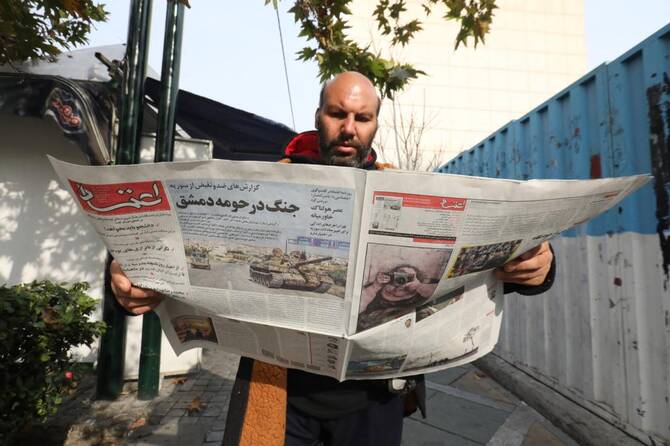
- After the fall of the Assad regime, television channels, radio stations and media outlets suspended broadcasting and publishing materials.
- “We hope to restore national media and the trust of Syrians,” said Information Minister Hamza al-Mustafa.
DAMASCUS: Syrian state television officially resumed broadcasting on Monday with a trial run, nearly five months after the overthrow of longtime ruler Bashar al-Assad and after delays due to sanctions and worn-out equipment.
Since the new government came to power in Syria in December, state media and other television channels, radio stations and publications linked to the Assad government have suspended broadcasting and publishing materials.
At 17:00 (14:00 GMT) on Monday, a presenter appeared on TV screens, greeting viewers and announcing the start of a test broadcast of the Syrian TV channel Alekhbariya from Damascus via two satellite providers.
The channel showed off its new corporate identity and broadcast images of Damascus and Umayyad Square, where the headquarters of the State Radio and Television Authority is located, as well as images of correspondents across the country.
“The first official television channel began operating today,” said the new head of government, Alaa Bersilo, promising that he would become “an intermediary between the state and society.”
He said broadcasts had been delayed several times “due to television infrastructure” and “sanctions against the former regime that affected satellite broadcasts.”
The channel’s director, Jamil Srour, said: “We were interested in making Alekhbariya suitable for the new Syria, and this is what delayed its launch.”
In a post on X, Information Minister Hamza Al-Mustafa called the launch a “very emotional moment,” expressing hope that the channel would help rebuild national media and become a model for “restoring trust” with Syrians.
After the Islamist group Hayat Tahrir al-Sham (HTS) captured Damascus on December 8 and announced the overthrow of Assad, the state news agency SANA stopped working for more than a day before resuming with a new staff.
However, state television failed to keep up with the rapidly developing events, first broadcasting archival footage and then ceasing broadcasts.
The new authorities have tightened measures against media outlets that were close to the ousted government, in particular the daily Al-Watan and the radio station Sham FM.
For decades, Syria’s ruling Baath Party and the Assad family dynasty have severely restricted all aspects of daily life, including freedom of the press and speech, while the media has become a tool in the hands of those in power and access for foreign media has been severely restricted.
Since the fall of the Assad regime, media outlets in exile or in areas previously controlled by the opposition have become popular, and a flood of foreign journalists has poured in.
Syria ranks 177th out of 180 countries and territories in the 2025 World Press Freedom Index published by Paris-based Reporters Without Borders (RSF).
According to RSF, while Assad’s overthrow ended “five decades of brutal and violent repression of the press… the newfound freedom of journalists remains fragile due to ongoing political instability and growing economic pressure.”